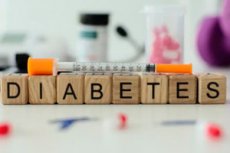New publications
Inhaled insulin may help people with type 1 diabetes avoid needles
Last reviewed: 02.07.2025

All iLive content is medically reviewed or fact checked to ensure as much factual accuracy as possible.
We have strict sourcing guidelines and only link to reputable media sites, academic research institutions and, whenever possible, medically peer reviewed studies. Note that the numbers in parentheses ([1], [2], etc.) are clickable links to these studies.
If you feel that any of our content is inaccurate, out-of-date, or otherwise questionable, please select it and press Ctrl + Enter.

Inhaled insulin may be a better option than injections or pumps for some people with type 1 diabetes, according to a new clinical trial.
Patients using inhaled insulin (Afrezza) in combination with long-acting insulin injections degludec had better blood sugar control than those given standard treatment, researchers report.
About 21% of those who used inhaled insulin showed an improvement in glycated hemoglobin (A1C) levels of more than 0.5% during the study, compared with 5% of those who received standard treatment.
The clinical trial results "will impact diabetes management by providing health care providers and patients with an alternative method of delivering insulin," said lead researcher Dr. Earl Hirsch, chairman of the diabetes care and education committee at Washington University in St. Louis.
Inhaled insulin comes in powder form and is taken by mouth using a special inhaler, the National Institutes of Health (NIH) explains. It is typically used at the beginning of each meal.
The study involved 123 adults with type 1 diabetes who were randomly assigned to take inhaled insulin plus insulin degludec, continue their usual multiple daily insulin injections, or use an automated insulin pump.
The study lasted over 16 weeks in 19 hospitals across the United States.
People with diabetes have A1C levels of 6.5% or higher, according to the NIH.
Among participants with an A1C level of 7% or higher, about 21% of those using inhaled insulin dropped below 7% during the study. None of the participants receiving standard treatment reached that goal.
Additionally, 19% of participants who switched from an automated delivery system to inhaled insulin showed an improvement in A1C levels of more than 0.5%.
The method proved to be a popular choice. More than half of the study participants wanted to continue using inhaled insulin after the trial ended, the researchers reported.
But inhaled insulin wasn't right for everyone. About 26% of patients in the inhaled insulin group had their A1C levels worsen, compared with 3% of those who continued standard treatment.
The trial results were presented at the American Diabetes Association's annual meeting in Orlando, Florida. Results presented at medical meetings should be considered preliminary until published in a peer-reviewed journal.
